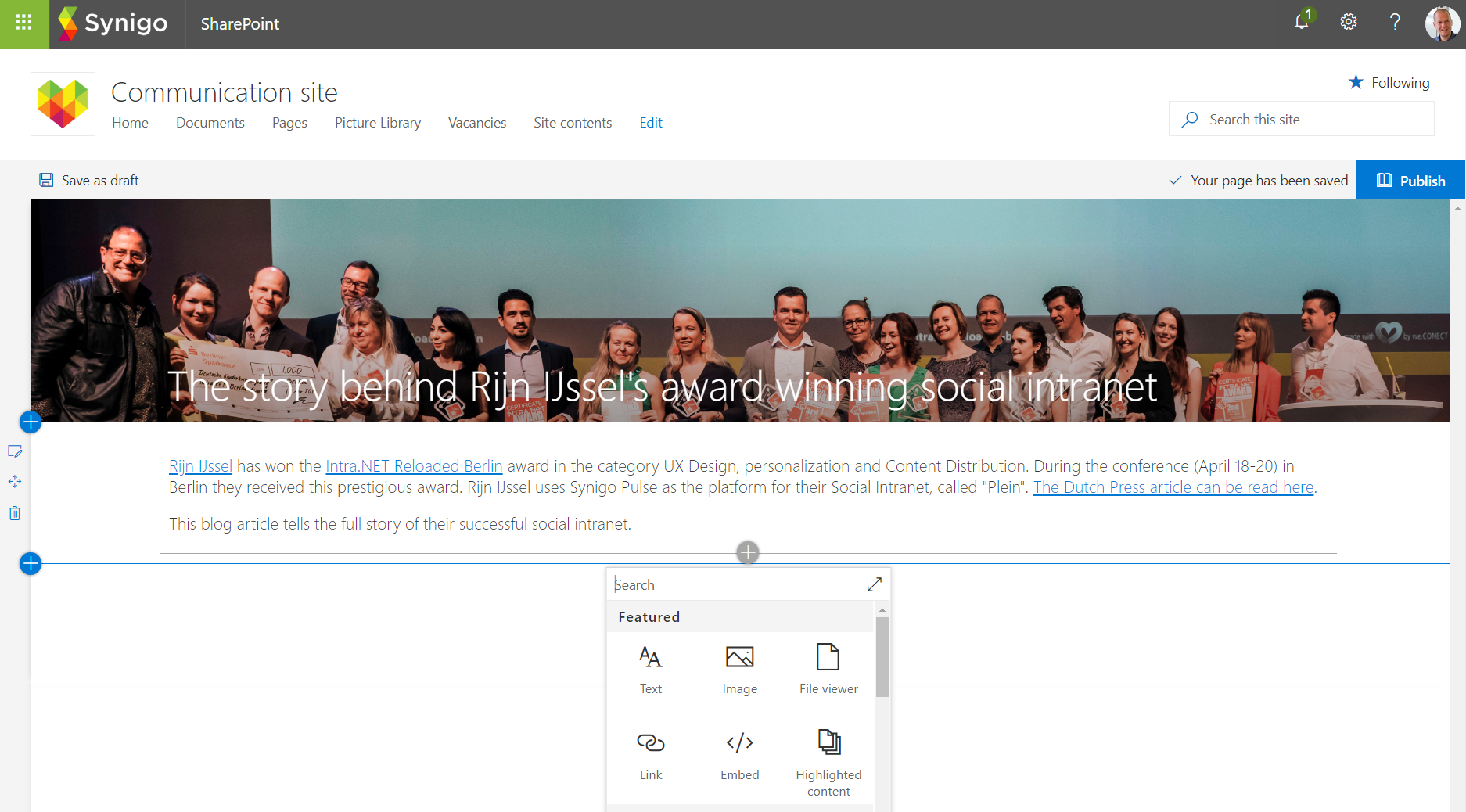Modern SharePoint Sites: new interface, old pitfalls
During #SPC18 Microsoft revealed new features in SharePoint Communications Sites & Hub Sites and the brand new SharePoint Spaces. Impressive! But beware, even with these beautiful new features, old pitfalls remain topical.
Any developer who has ever set up a SharePoint environment knows how extensive the Microsoft toolbox is. It offers a paradise of possibilities for quickly building an intranet, with handy functionalities to allow teams to collaborate efficiently, share documents, and more.
Complexity gets in the way of usability
But what actually happened? Developers went all out on the technological capabilities without reflecting on what users want and how they work. They created environments that were much too complex for the average user. The somewhat old-fashioned look & feel of SharePoint – which didn’t fit with how modern web applications work – made it even more complicated for users. But developers had a solution for that: custom work. With the result that SharePoint environments were virtually unable to be maintained.
Focus on the organization instead of someone’s work
There was another problem: the developers were managed by executives and line managers who still think inside out and thus put the organization ahead of the employee. Consequently, the intranet was more of a company brochure than an environment where people go to keep abreast of what is going on. As a result, soon no one was visiting the intranet and teams just went back to using tried-and-true means of communication, such as email, to collaborate.
SharePoint, Hub Sites & Communication Sites: modern interface, even for mobile
When SharePoint became part of Office 365, it seemed that this was the end of SharePoint as an independent product. Seemed – because on May 4, 2016, Microsoft breathed new life into the product with ‘The Future of SharePoint’. There was a modern interface that also made it possible to approach SharePoint with a mobile device.

At the core, SharePoint has not changed: it remains a large ‘box of bricks’ with a great deal of flavors and varieties, even though an individual company only needs just a few of the bricks. The question is: which ones? If you put that question to developers, they continue to use too many bricks. Logical, because technology is their job. If you ask (line) managers to make the decision, then they will all want to have a prominent place for their department news and develop a team site for every little meeting. Employees will still not see the forest through the trees.
Focus on the employee
Actually, you should leave the decision to each individual employee. I know what you’re thinking: that’ll be a mess because everyone wants something different. Precisely: It’s true that everyone wants something different, and that’s why you should offer everyone something different. And that is possible, without producing chaos. After all, that is exactly why we developed Synigo Pulse. Pulse lies like a skin over Office 365 and SharePoint and shows precisely those things that an individual employee needs in order to do his or her work – customized news, the applications they use, an overview of open tasks and notifications. This allows us to transform the big receptacle into a handy overview that fits an employee’s (information) needs like a glove. We show only a few trees instead of the entire forest.
Curious about what that looks like? We’d love to give you a demo. Call me or send me an email, so we can make an appointment.
Robin Slagman is co-founder and co-owner of Synigo.


